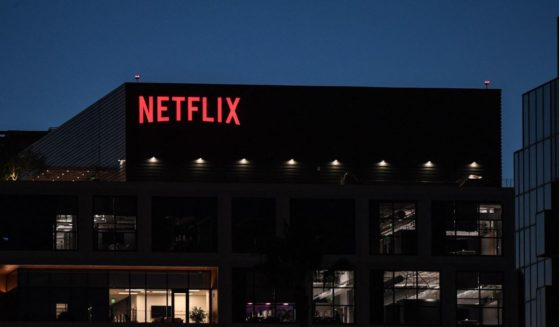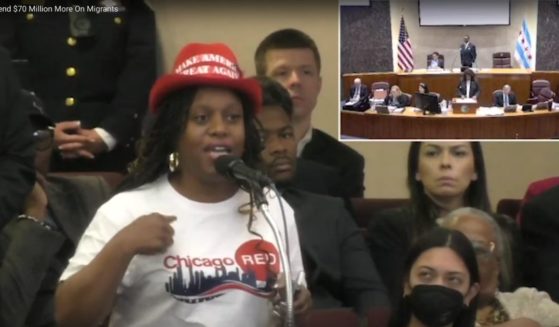Trump Cuts Through More Obama Red Tape, Rolls Back Vehicle Fuel Efficiency Regulations
It’s rare that Barack Obama tweets a direct criticism at the Trump administration.
However, on Tuesday, the former president laid into a decision from Trump’s Department of Transportation and Environmental Protection Agency to roll back Obama-era federal vehicle fuel efficiency standards, comparing it — sigh — to coronavirus.
“We’ve seen all too terribly the consequences of those who denied warnings of a pandemic,” Obama tweeted after the new standards were announced on Tuesday.
“We can’t afford any more consequences of climate denial. All of us, especially young people, have to demand better of our government at every level and vote this fall.”
We’ve seen all too terribly the consequences of those who denied warnings of a pandemic. We can’t afford any more consequences of climate denial. All of us, especially young people, have to demand better of our government at every level and vote this fall. https://t.co/K8Ucu7iVDK
— Barack Obama (@BarackObama) March 31, 2020
It’s good to see the former president is staying limber with his attacks. In under 280 characters, he managed to not only trash Trump on coronavirus but also fuel efficiency standards as well. Yes he can.
However, it’s probably worth looking at the rule in question — which, if you were paying attention, actually deals with fuel economy and not emissions, although the two are closely related.
According to Fox News, the new regulations, which will be effective from model years 2021 through 2026, will only require automakers to increase their fleet fuel efficiency by 1.5 percent a year.
Under previous regulations, in effect from 2012, automakers needed to improve their fuel economy by 5 percent each year.
That was “unrealistic,” officials said.
“This strikes the right balance between environmental considerations, health considerations and economic considerations,” EPA Administrator Andrew Wheeler told reporters during a call.
“This rule reflects the Department’s No. 1 priority — safety — by making newer, safer, cleaner vehicles more accessible for Americans who are, on average, driving 12-year-old cars. By making newer, safer, and cleaner vehicles more accessible for American families, more lives will be saved and more jobs will be created,” Transportation Secretary Elaine Chao said.
The old regulations would have meant that fleet fuel economy — defined as the average in fuel economy across all vehicles an automaker sells — would have been 55 miles per gallon in 2026. The new regulations will mean the fleet fuel economy will only have to be slightly above 40 miles per gallon by 2026.
According to The Hill, that’s a number the manufacturers think they can meet. In fact, they already estimate they can make a 2.4 percent yearly fuel economy increase without regulation.
You can guess the advantages here: cheaper cars, more flexibility for automakers and more room for innovation.
But what about the costs? After all, you’ll be spending more at the pump, to say nothing of the externalities affecting the environment.
David Friedman, vice president for advocacy with Consumer Reports, probably synthesized the argument against rolling back the standards as well as anyone: “Unemployment claims skyrocketed to more than 3 million last week, so millions of Americans are now going without a paycheck, and our nation is at risk of a recession because of the COVID crisis,” he told reporters.
“So it’s absolutely stunning the administration would finalize a plan that will cost drivers more money at the pump for years to come. Consumers, workers, small business owners are the engine of America’s economy. And the last thing they need is to get stuck spending more on gas.”
However, what that discounts is the fact that the average car on the road now is older than it’s ever been: 12 years. And there’s a reason for that.
“The current standards have been a factor in the rising cost of new automobiles to an average of $35,000 or more — out of reach for many American families, the agencies said,” IndustryWeek reported in 2018.
“Compared to the preferred alternative in the proposal, keeping in place the standards finalized in 2012 would add $2,340 to the cost of owning a new car, and impose more than $500 billion in societal costs on the U.S. economy over the next 50 years.”
That, Chao says, represents an opportunity to get consumers into newer cars — ones that are more environmentally friendly as well as safer.
“It will make newer vehicles more affordable to consumers, safer for passengers and cleaner for the environment,” Chao said. “It’s a win-win-win solution.”
Furthermore, there’s nothing to say car buyers don’t value fuel economy.
From a 2016 study in the Journal of Public Economics: “By seeing how price differences across high and low mileage vehicles of different fuel economies change in response to shocks to the price of gasoline, we estimate the relationship between vehicle prices and future fuel costs. Our data suggest that used automobile prices move one for one with changes in present discounted future fuel costs, which implies that consumers fully value fuel economy.”
The rule will be subject to court challenges, especially given tougher regulations that were drafted by California and enacted by a number of other states.
It’ll also be subject to rhetoric like the former president’s. He’s not alone, either. California Democratic Sen. Kamala Harris also somehow found a way to incorporate coronavirus-related politicking into her response.
“Hospitals are in desperate need of ventilators for people with respiratory illnesses, millions have applied for unemployment, and families across the nation are struggling to make ends meet,” she said in a statement. “This administration’s own analysis has shown this is a bad deal for Americans. During this time of crisis, we should have every federal policy — including bold clean car standards — in place to make our air clean, create jobs, and save consumers money.”
Aside from Obamacare, this is one of the most prominent vestiges of the Obama years — and one that doesn’t take legislation to ditch.
At the point where we don’t get new cars out on the road, we don’t actually get any benefit from increased fuel economy standards.
The Trump administration has estimated that there’ll be an estimated savings of $1,400 per vehicle and 2.7 million new cars out on the road.
Whether that materializes is another question entirely, but it doesn’t take a rocket scientist — or auto engineer, for that matter — to see that this will get newer cars out on the streets.
It may not be making news, but it’s undoubtedly a big step in the right direction.
Truth and Accuracy
We are committed to truth and accuracy in all of our journalism. Read our editorial standards.












